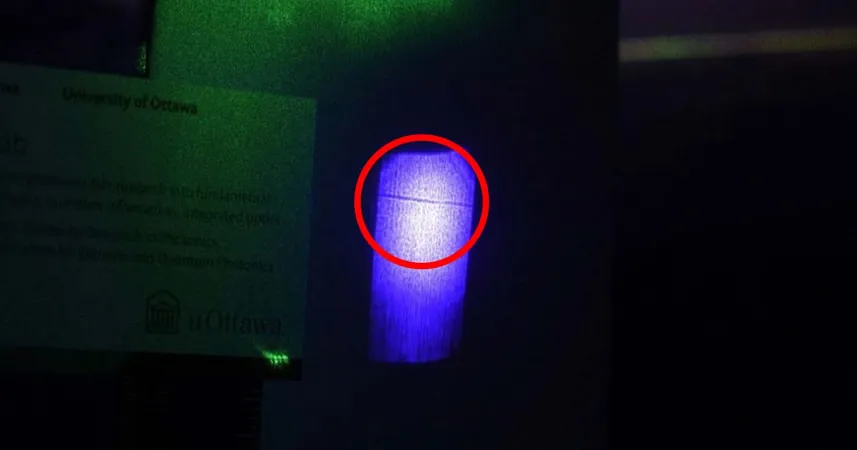
Scientists Stunned by Groundbreaking Discovery: Laser Light Can Actually Cast Shadows!
2024-11-16
Author: Yu
Introduction
In a remarkable twist that defies conventional wisdom, a team of scientists has unveiled a fascinating phenomenon: under certain conditions, a laser beam can indeed cast a shadow. This unexpected finding could revolutionize our understanding of optical lasers and lead to innovative applications across various fields.
Historical Perspectives
Historically, it was taken for granted that light beams would seamlessly pass through one another without any significant interaction. However, a recent study published in the esteemed journal *Optica* highlights a captivating experiment conducted by Raphael Abrahao and his team at Brookhaven National Laboratory. They discovered that shooting a narrow green laser through a larger blue laser beam, contained within a ruby crystal, actually created a shadow—the shape of the green beam itself!
Team Insights
“Laser light casting a shadow was previously thought impossible since light usually passes through other light without interacting,” Abrahao stated, expressing the intrigue behind their findings. “Our demonstration of this counterintuitive optical effect invites us to reconsider our notion of shadow.”
Origins of the Research
This groundbreaking research finds its origins in a light-hearted lunch discussion among the researchers about the physics of lasers and nonlinear optical responses. The team decided to put their playful idea into practice, leading to an unexpected yet striking result.
Experimental Setup
In the experimental setup, the researchers first directed a high-powered green laser through a cube-shaped ruby crystal. Simultaneously, they introduced a perpendicular blue laser. The amazed researchers detected a significant shadow on the surface illuminated by the blue laser, revealing that the green laser acted more like an opaque object rather than just a beam of light.
Underlying Mechanism
The underlying mechanism is attributed to 'optical nonlinear absorption' occurring within the ruby. Essentially, the presence of the green light boosts the absorption of the blue beam, leading to a darker area that effectively casts the shadow. Remarkably, the team measured a contrast of around 22 percent—akin to the shadow cast by a tree on a sunny day.
Implications and Future Applications
“This discovery expands our understanding of light-matter interactions and opens up new possibilities for utilizing light in ways we hadn’t considered before,” Abrahao explained. The implications of this research are vast. Potential applications may include optical switching, where light controls another light's presence, or precision technologies essential for high-power laser systems. Future work aims to investigate how the intensity of one laser can be manipulated by another, and to determine if similar shadow-casting effects can be replicated with different wavelengths and materials.
Conclusion
As the scientific community buzzes with excitement over this peculiar discovery, one thing is clear: the age-old concept of light and shadows is about to be turned on its head! Will we soon be employing lasers in ways that were previously thought impossible? Only time will tell. Stay tuned for more shocking updates in the realm of science!



 Brasil (PT)
Brasil (PT)
 Canada (EN)
Canada (EN)
 Chile (ES)
Chile (ES)
 España (ES)
España (ES)
 France (FR)
France (FR)
 Hong Kong (EN)
Hong Kong (EN)
 Italia (IT)
Italia (IT)
 日本 (JA)
日本 (JA)
 Magyarország (HU)
Magyarország (HU)
 Norge (NO)
Norge (NO)
 Polska (PL)
Polska (PL)
 Schweiz (DE)
Schweiz (DE)
 Singapore (EN)
Singapore (EN)
 Sverige (SV)
Sverige (SV)
 Suomi (FI)
Suomi (FI)
 Türkiye (TR)
Türkiye (TR)